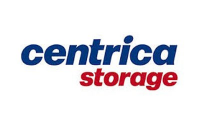Zero Carbon Humber
The Zero Carbon Humber (ZCH) partnership is a group of businesses committed to transforming the Humber into the world’s first carbon neutral industrial cluster by 2040. Collectively ZCH represents a series of low carbon and decarbonisation projects, as well as their associated inter-linking infrastructure, which will transform the Humber industrial cluster through the deployment of Carbon Capture and Storage (CCS) and Hydrogen production at scale. ZCH represents a truly transformational opportunity for the Humber that we preserve existing jobs and help stimulate the region’s economy.
The project is a consortium of impressive names including Equinor; Drax; National Grid; Mitsubishi; Centrica; SSE Thermal; British Steel; ABP; and PX Group. Each partner brings unrivalled expertise in their field, as well as a wealth of international experience and decades of history within the local community to the table.
3 min read

A network of ground-breaking projects
Zero Carbon Humber’s anchor project is the Equinor-led Hydrogen to Humber (H2H) Saltend project, which will establish the world’s largest hydrogen production plant with carbon capture at px Group’s Saltend Chemicals Park. H2H Saltend will convert natural gas to hydrogen and capture the carbon dioxide (CO2). In the first phase, this could reduce emissions by circa 900,000 tonnes per year as industrial customers switch fuel to low-carbon hydrogen and Triton Power’s gas power plant blends hydrogen into the fuel supply via its upgraded Mitsubishi turbines. H2H Saltend is expected to grow over time, contributing to further emissions reductions from the Chemicals Park and across the Humber.
A pipeline network, developed by National Grid Ventures, will link H2H Saltend to energy-intensive industrial sites throughout the region, enabling further decarbonisation as additional businesses switch to low carbon hydrogen and capture their CO2 emissions. The CO2 will be compressed at Centrica Storage’s Easington site and stored under the Southern North Sea using offshore infrastructure shared with the Teesside industrial cluster.
At Selby in North Yorkshire, Drax Power Station would connect to the completed CO2 pipeline network, underpinning the ZCH scheme with bioenergy with carbon capture and storage (BECCS) – a vital negative emissions technology that Drax is pioneering and which will be essential to decarbonising the Humber Cluster and helping the UK achieve its legally binding 2050 net zero carbon target.
The pipeline network will also run via SSE Thermal’s Keadby site, where it is developing Keadby 3. This could become the UK’s first gas-fired power station equipped with carbon capture technology by the mid-2020s, providing decarbonised flexible power to complement intermittent renewables generation and maintain security of supply. The network will also run via Immingham, where Uniper is planning to add to its European hydrogen ambitions by developing clean hydrogen production at its Killingholme site, in line with Uniper’s pledge to be carbon neutral in Europe by 2035.
As one of the UK’s leading steel manufacturers, and a significant local employer, British Steel could benefit from the ZCH infrastructure as part of its drive to lower emissions. ABP, the major ports and logistics provider for the region, will support the global reach of the low carbon products and chemicals produced at Scunthorpe and at Saltend.
The ZCH projects are supported by the University of Sheffield’s Advanced Manufacturing Research Centre, which models the wider economic and supply chain opportunities in the UK provided by these new technologies.
In addition to the key sites that are part of the ZCH scheme, there is further potential for other future projects to attract inward investment and cement the Humber’s reputation as the UK’s Energy Estuary and a world-leading net zero region. These include integrating offshore wind power into hydrogen production, decarbonising the regional gas grid, supplying hydrogen transport fuelling hubs, providing CO2 storage services to other industrial clusters and creating the world’s first sustainable maritime refuelling port.


Protecting local industry, creating new jobs and attracting inward investment
The Humber is the largest carbon emitting industrial cluster in the UK, with emissions dwarfing those of other regions. The local economy and society have traditionally been dependent on energy intensive industries such as refining, steel making and chemicals for its jobs and skills base.
Zero Carbon Humber is potentially the only method of enabling these existing industries to decarbonise their processes and lower their emissions without negative economic or social impact. Indeed, it offers to create tens of thousands of new jobs in the region, supporting skills, apprenticeships and educational opportunities.
Crucially, it will build on the Humber’s reputation as the UK’s Energy Estuary, establishing it as a world-leading international net-zero flagship, attracting inward investment and future growth for future generations.
Find out more about Zero Carbon Humber.
“
Zero Carbon Humber represents a truly transformational opportunity for the Humber”
Contact
Invest Humber: Clean Growth in the UK’s Energy Estuary was created and is managed by Future Humber.
Future Humber promotes the region's distinctive strengths to the widest audience and accelerates opportunities to unlock the potential in the Humber.
Diana Taylor is the Managing Director of Future Humber. She is responsible for guiding the vision and strategy to market the Humber to the UK, Europe, and beyond. Diana works with partners and stakeholders to build the voice of the region and enable businesses and organisations within the Humber to succeed and grow.
If you have a question about Invest Humber or would like to find out more about any of the projects included on the website, you can contact Diana below.








